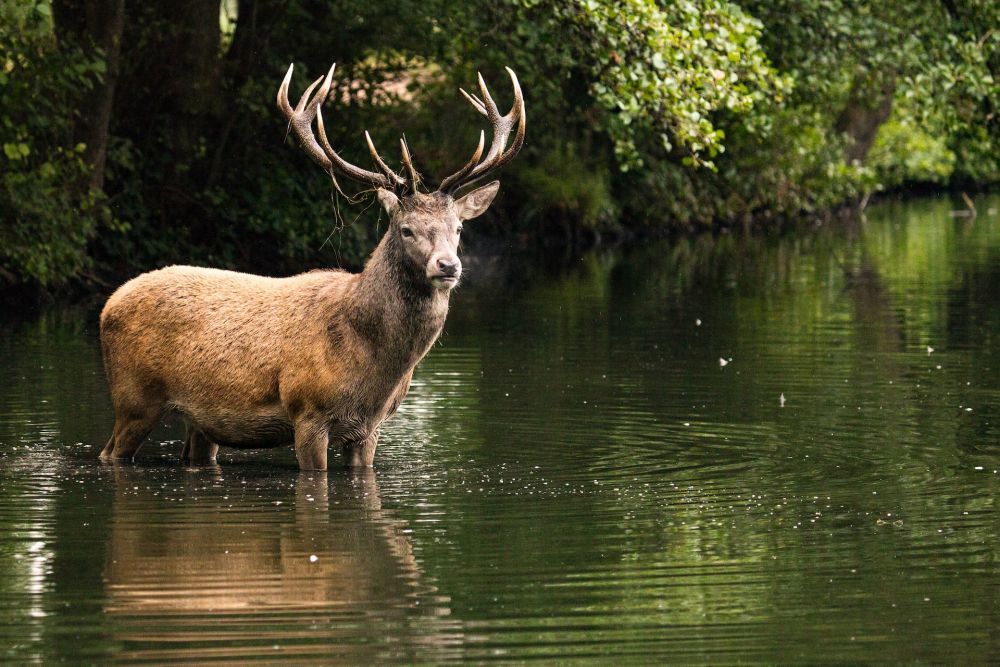The Sottish Highlands is at the fore front of wildlife and cultural conservation, a living place where wildlife and people have thrived together for thousands of years, Scotland is blessed with the presence of over 100 different bird species, including golden eagle, black grouse, osprey, red kite, Scottish cross bill and crested tit.
Habitats are widely varied and include agricultural land, pastures, woodland, moorland, wetlands, mountains, rivers, lochs, mudflats, cliffs and sea.
You will be able to appreciate the different species and environments that Scotland has to offer throughout the year since they adapt to the changing seasons. There is heather-covered moorland that stretches as far as the eye can see, wild tundra on high mountain tops covered in snow in the winter, ancient Caledonian Pine trees in the spring, stunning glens that slope away into the sky, lochs that are full of mystery and history, and so much more.
Huge mountains, Munros, Corbits, and Donalds, as well as cloud-covered islands
are home to a variety of animals that can only be found in the Highlands and Islands of Scotland.
Over one hundred different species of birds are on loan to Scotland, in addition to the wild life found in specialised flora and fauna, such as the golden eagle, the red grouse, the black throated divers, the pink-footed geese, the wigeon, the bottlenose dolphins, the otters, the seals, the wildfowl and waders, the mountain hares, the black grouse, the ospre
The Montrose Basin is an enclosed estuary of the river Esk that features 750 hectares of tidal mudflats. It is also the permanent residence of more than 100,000 migratory birds, which are available for viewing by anybody throughout the fall and winter months.
The Scottish Highlands are home all through the year to awe-inspiring waterfalls, charming walking paths through the woods, and ancient visitor centres.
Woodlands that are teeming with wildflowers, woodland birds, and all varieties of insects, dragonflies, and damselflies such as the Northern Emerald and the Azure Hawker, a species that prefers to breed in sphagnum-rich bog pools and attracts twitchers from all over Scotland. These woodlands are also home to a variety of other wildlife, including dragonflies and damselflies.
There have been at least 14 different dragonfly species reported as breeding in the Glen Affric Reserve, making it one of the most important places in Britain for dragonfly breeding.
National Nature Reserves are abundant in Scotland, notably in the Highlands. These are places of Scotland that are known for their breathtaking natural scenery and are a favourite vacation spot for people who are interested in nature and watching wildlife. Tourism focused on observing wild animals is rapidly becoming an important industry in Scotland.
If the Dolphins were to participate in the game,
On the Black Isle, between Fortrose and Rosemarkie, there is a beach known as Chanonry Point. This beach is located on a narrow peninsula that provides views of Fort George across the Moray Firth.
Depending on the circumstances of the tide, you can find the dolphins just a short distance off the shore, waiting to begin their hunt for fish as soon as the tide begins to turn.
Because so many people go here to get a close look at dolphins, the viewing area can become quite congested at times.
The Montrose Basin is an enclosed estuary of the river Esk spanning 750 hectares of tidal mudflats. Beginning in the fall and continuing through the winter, the Basin is home to over 100,000 migratory birds for everyone to enjoy.
Throughout the course of the year, travellers to the Highlands can experience breathtaking waterfalls, historic visitor centres, and picturesque woodland treks.
the Northern Emerald and the Azure Hawker are two species of dragonfly and damselfly that attract twitchers from all over Scotland to the northern regions of the country. This species prefers to breed in sphagnum-rich bog pools. woodlands full of wildflowers, woodland birds, and all types of insects dragonflies and damselflies.
There are at least 14 different dragonfly species known to breed in the Glen Affric Reserve, making it one of the most important places for dragonflies in all of Britain.
The Highlands of Scotland are home to many of Scotland's National Nature Reserves, which are regions of outstanding natural beauty that serve as a destination for all visitors who are interested in nature and wildlife watching. Wildlife-tourism is becoming an increasingly important part of Scotland's wild landscape.
If the Dolphins were to play,
A beach known as Chanonry Point may be found on the Black Isle, which is a tiny peninsula, between the towns of Fortrose and Rosemarkie. From this beach, one can see Fort George across the Moray Firth.
You may find the dolphins here, only a short distance from the shore, waiting to begin their pursuit of the fish. When the tide begins to turn, depending on the conditions of the tide, the dolphins will begin to play.
This is a favourite spot for getting up up and personal with dolphins, and as a result, the area may become quite crowded.
